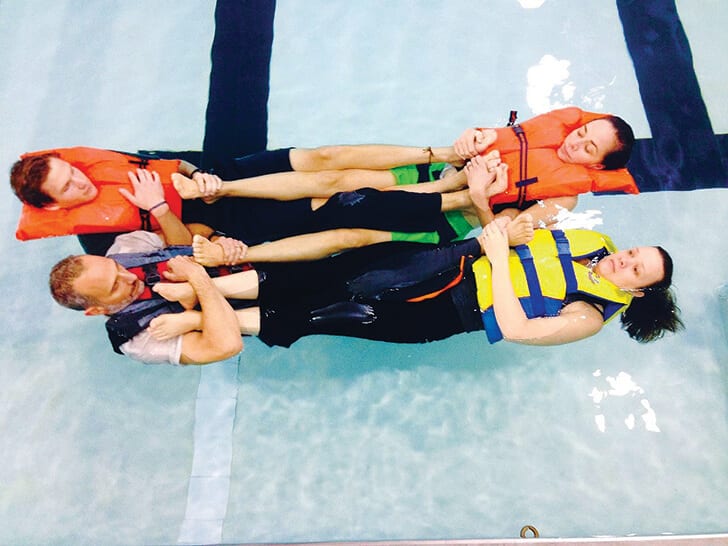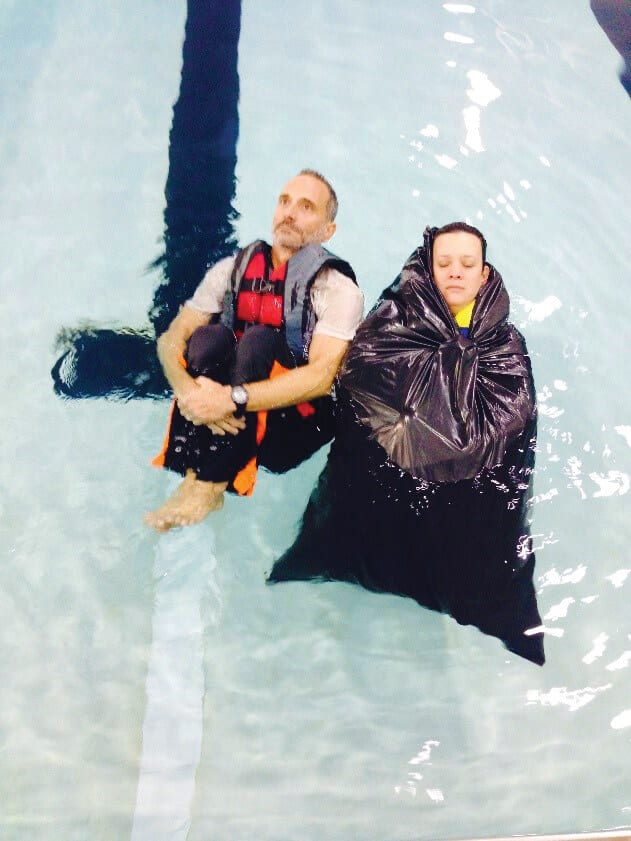By Ben Rayner:
Taking an inadvertent swim is nothing to laugh at during the winter months. Hypothermia, although it can be dangerous, rarely leads to death. The greatest water hazard this time of year is cold-water shock. Survival time is often measured in seconds, as symptoms are instantaneous and can rapidly lead to drowning.
The most critical stage of cold-water immersion is called the cold-water gasp reflex. When thrust into cold water, humans involuntarily gasp uncontrollably. This can lead to aspiration of water and rapid drowning. The next stage, the mammalian dive reflex, occurs as the body cools. Capillaries are constricted as blood is drawn from extremities and shunted to body’s core. Fine dexterity falters and simple tasks like grasping a lifeline become impossible. These symptoms lead to swimming failure and drowning.
What to Do:
To combat the gasp reflex, hold your breath and try to keep from gasping for as long an interval as you can. This is difficult. However, if you hold of your breath for short durations, the effects of the gasp reflex will slowly ebb. Do perform any other actions until your breathing is under control.
The HELP Position:
Always wear a life vest while on the water, and understand how it works before emergency strikes. The technique that works best for hypothermia mitigation is the Heat Escape Lessening Posture/Position (HELP). This position cannot be accomplished without a life vest or flotation aid, and is useful when immediate rescue or self-rescue are not options.
Grab the front or back of your knees and ball up. Don’t squeeze too tightly; that wastes energy. A moderate grip is sufficient. Then simply lean your head back and go with the flow.
The HELP position minimizes water flow across the body and keeps the survivor in the warmest part of the water column. This lessens heat loss and extends survival time. You cannot effectively move in the HELP position, but saving energy is the point in some situations.
To further lessen heat loss, a 3 mil or thicker contractor’s grade bag can be kept in or on your life vest. Get completely into the bag, including the lobes of your vest and in the HELP position
Carpet Formation:
A group of survivors can mitigate hypothermia using the carpet formation. Whether it’s two survivors or twenty, it is the best way to stay alive longer in cold water. Survivors link arms to those on either side and interlock their legs with the person across from them to share as much body heat as possible. Grab the feet of the person in front of you, and put their feet on your chest.
This formation keeps survivors at the surface, where water is usually warmer, it shares body heat and conserves energy, it provides comfort and keeps the group together. Additionally, it makes a larger target for rescuers to find, provides 360-degree skyward visibility for spotting rescuers and creates a platform for an injured survivor or someone without a life vest.
Ben Rayner is executive director of Water Emergency Training Inc, a nonprofit dedicated to drowning prevention. He is a former survival instructor and an award winning investigative journalist. For more information, see www.wateremergencytraining.org.

